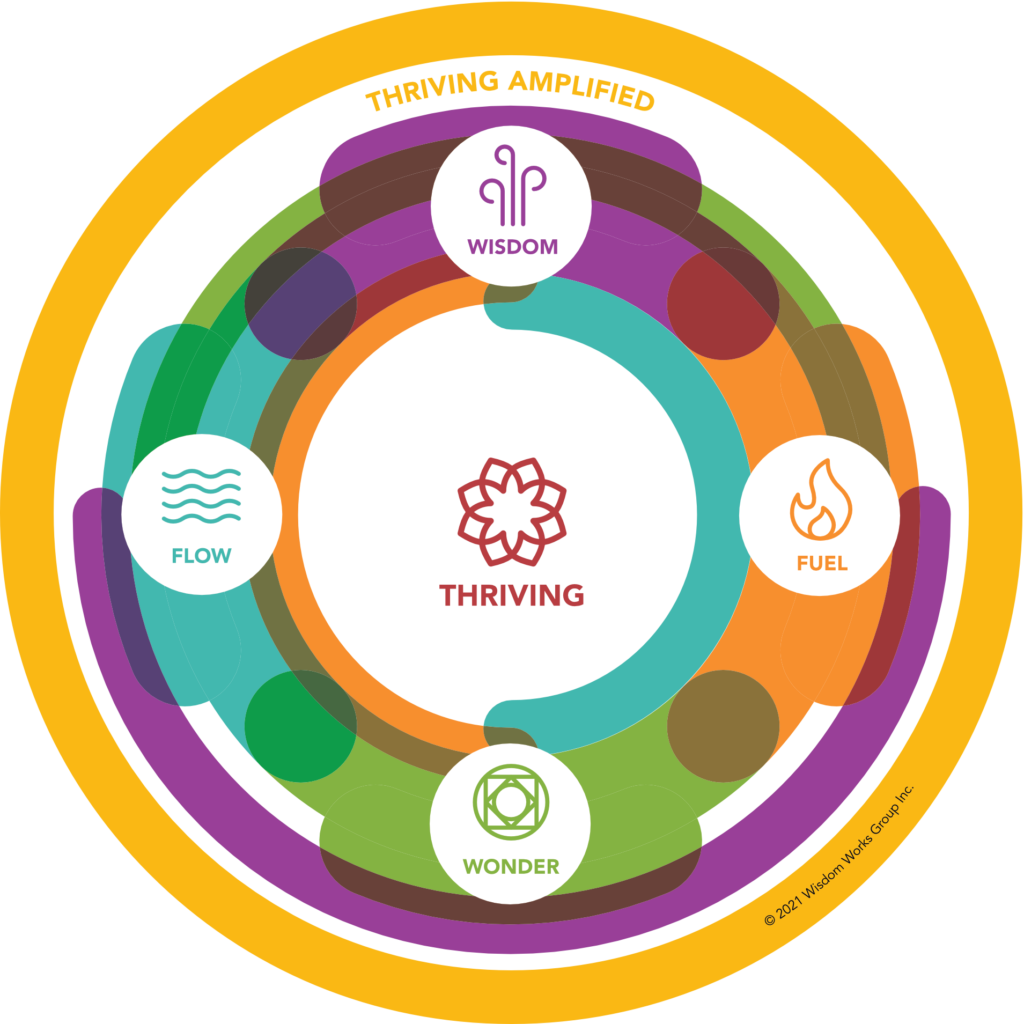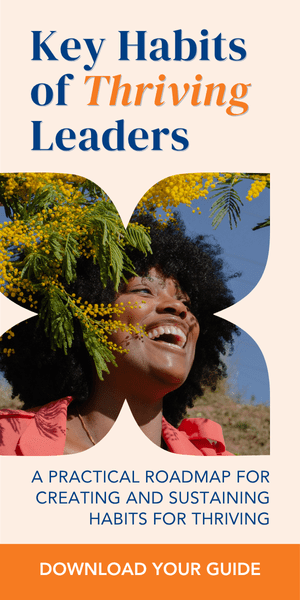Few organizations today will outwork their competition.
Over the past three years of global change and disruption, most organizations have already been compelled to rewire how they operate and rebuild their culture—working harder, faster, or longer is not an option if you want your company to last for the long haul.
During this time, an unmistakable point of company differentiation has been emerging: How well the organization enables people to adapt to stress and thrive. This means prioritizing thriving—a natural state of human functioning—as an essential factor in achieving outcomes that matter.
As readers of the Be Well Lead Well® newsletter, this isn’t new information for some of you—it’s your lived experience. You already know what studies, such as our recent research across the health & wellbeing industry, reveal: Reorienting our organizations, teams, and personal lives around what it means to truly thrive has become one of the biggest challenges and opportunities. Leaders in all industries and at all levels are trying to understand the drivers that make life worthwhile and create a roadmap to deliver on those drivers. They are building frameworks of thriving to evolve their companies.
A FRAMEWORK FOR THRIVING FOR YOUR COMPANY
At Wisdom Works, we believe advancing thriving through every part of your business is a better way to do business altogether. When designed well, a strategic framework for thriving helps you:
- Direct business decisions, resources, and actions toward upleveling the lives of people and the planet.
- Create goals and metrics against which you track progress.
- Inspire relationships with stakeholders, such as employees, customers, investors, vendors, and community partners, with a foundation of mutual growth, benefit, and wellbeing.
- Generate an inspiring, coherent story for sharing your commitments inside and outside your company.
- Establish the context for an organizational culture where people elevate their capacity to thrive as they accomplish meaningful work.
Organizations choose different routes for implementing a framework of thriving that’s meaningful to them. Some companies make it part of their ESG efforts, while for others, it augments their sustainability plans. Some companies call it a wellbeing framework, while others use the terms circular, inclusive or regenerative.
How you name and brand your framework for thriving is less important than its authentic positioning and purpose to steward your company in one of its primary roles: to reduce suffering and promote flourishing in the world.

Wisdom Works’ Framework of Thriving forms the foundation of our offerings and work with clients.
THE ANATOMY OF AN EFFECTIVE FRAMEWORK OF THRIVING
Let’s be clear: No company is perfect, and neither are their frameworks. When our team helps leaders design a framework of thriving that sets new standards for the organization, we suggest that it meets at least these seven criteria:
- It rings true for the unique qualities of the organization.
- It focuses on the conditions for all people to thrive and prosper—an audacious aim where everyone fairly benefits, including future generations.
- It involves the planet, with a deep realization that people cannot thrive if we do not embrace and learn from both the planet’s finitude and abundance.
- It communicates in an uplifting and clear language and tone.
- It integrates, consolidates, and/or extends efforts the organization already has underway to advance the capacity of people to thrive, individually and together.
- It represents and channels the heart and will of the people who make up the organization.
- It becomes a well-used management tool for developing the organization. This includes the evolution of the thriving, collective leadership required in the emerging, yet unknown future organizations (and all of us) experience.
WHAT ELSE DO YOU NEED TO KNOW?
As your organization contemplates what a framework of thriving might mean, here are a few things to consider:
- Cities and countries in which your organization may operate are shifting toward wellbeing economies. Because they are adopting frameworks for thriving as part of this shift, there will be higher expectations for your organization to do the same. Read The Shared Ingredients for a Wellbeing Economy by the Centre for Thriving Places and Carnegie U.K. to learn the common narratives running through key societal frameworks for improving lives and promoting equitable, sustainable prosperity—and think about how these may relate to your company.
- Rewiring your organization to advance thriving requires an upleveling of leadership. As Wisdom Works brings the science and practices of thriving to life through our groundbreaking wellbeing leadership assessment and services to develop leaders, workforce cultures, and brands, we appreciate that this is a transformative work for most leaders. For those who are ready, it brings about a step change in how they lead, through the integration of new levels of vibrancy, adaptability, and clarity of purpose.
- Employees are redefining what they want from work. The past few years have been a time of significant anxiety and the heightened stress is prompting people to redefine how they want to spend their time and energy. Employees are now thinking how work fits into their lives rather than how to make their lives fit their careers. As a recent New York Times piece argues, “workers in every corner of the economy are examining the conditions of their jobs and demanding better wages, flexible hours and expansive benefits.”
Take an honest step back for a moment: How resilient are the people that fuel your company? To what extent are they thriving? How well do they adapt to stress—and transform it into positive innovations and growth that betters our shared future?
Building a framework of thriving is part of this larger inquiry, or what feels to me as a quickening, rewriting how organizations relate to people and the planet. I predict that organizations steered by an ethos to advance thriving will lead and inspire us all.
Want to receive the latest research, practices and insights on thriving directly to your inbox? Subscribe here.






